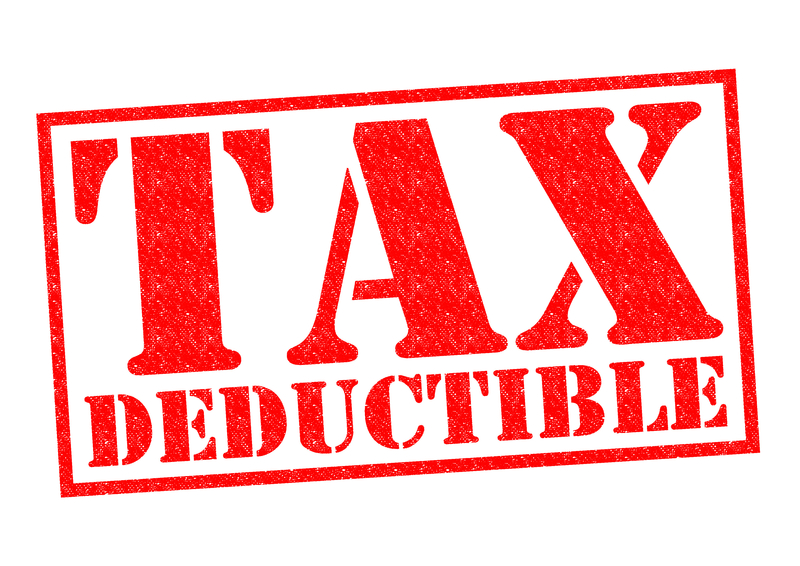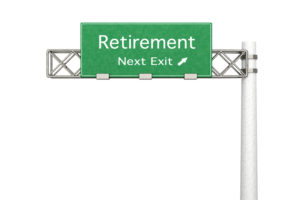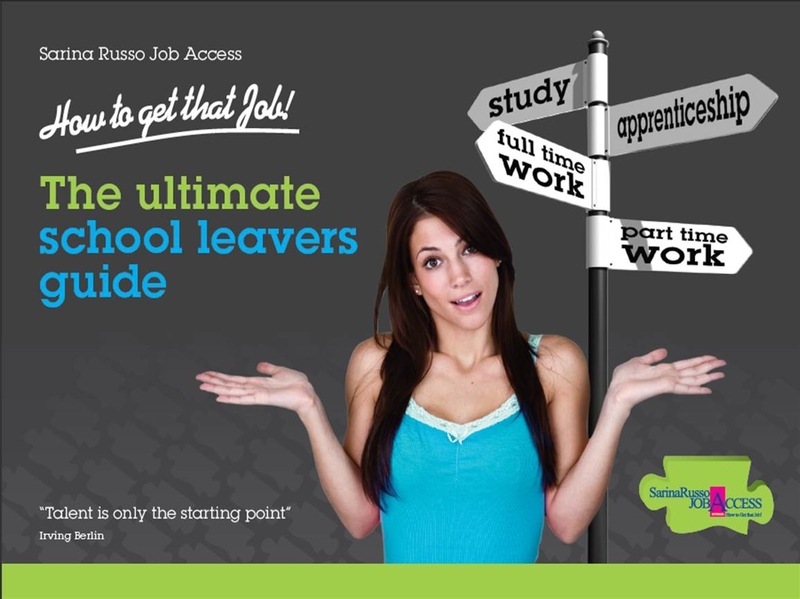
Minimise Tax
How can I reduce my tax bill?
As the month of June rapidly approaches it is topical for us all to think about what we can do to reduce our income tax bill. Of course long-term tax planning is the most appropriate way of managing our income tax costs, however, short-term measures should still be looked at each year. We strongly recommend that you meet and discuss your circumstances with your taxation adviser. Here is a brief list of items to consider:
Individuals
- Consider prepaying deductible expenses such as union fees prior to 30th
- Buy some work related tools, uniforms or protective clothing and boots.
- Make tax-deductible donations to approved charities.
- Maintain records of all motor vehicle travel performed for work purposes.
- Maintain records of other travel expenses for work purposes such as e-tags, overnight accommodation and meals, bus, train and tram fares and parking costs.
- Maintain records of work clothing alterations, laundry and dry cleaning costs.
- Record all associated costs applicable to a seminar or course of self-education relating to your current employment, including course fees (not HELP fees), stationery, office expenses, computer and printer expenses, Internet, heating and power, telephone and travel.
- Maintain records and documentations of other expenses incurred partly for work including mobile telephone, home office heating and power, Internet, computer, stationery, sun protection and applicable tools and equipment.
- Take out income protection insurance outside superannuation and pay the premiums from your private funds.
- Negatively gear an investment such as a rental property or a share portfolio.
Businesses
Short Term
- Ensure that superannuation contributions are paid and received by the fund prior to 30th of June.
- Maximise the concessional (deductible) superannuation contributions of the owners. These are currently $30,000pa for those under 50yo and $35,000pa for those over 50yo. Note that these maximum limits are reducing from 1 July, 2017 to $25,000pa for everyone eligible.
- Consider deferring income until after 30th of June, if possible. Most businesses are taxed on income, as it is invoiced, although if you operate on a cash basis for income tax, your income will be taxable when received.
- Accelerate your deductions by purchasing (and paying, if on a cash basis) for any items which form part of your business operating expenses before 30thJune. Note that buying stock items doesn’t help. Top up your fuel tanks!
- Review your outstanding debtors and write-off any debts that you think are not collectable prior to 30thJune.
- Consider purchasing additional items of plant and equipment costing less than $20,000 each and taking advantage of the immediate write-off rule if you are a small business enterprise (SBE).
- SBE taxpayers can prepay certain expenses for a period not exceeding 12 months, such as interest, advertising, lease payments, rent, rates, subscriptions and insurance and claim them in the year of payment.
- Primary Producers can make a Farm Management Deposit (FMD) prior to 30th June.
- Review your schedule of plant and equipment (if they are not pooled) and scrap any pieces that are now obsolete.
- Review your stock items and determine if the market value of any item is less than the original cost, resulting in a lower stock on hand figure (less profit).
- Pay bonuses to deserving staff members prior to 30 June.
Longer-term
- Arrange your affairs to replace private loans with business/investment loans where the interest is deductible.
- Review your legal structure to ensure it is appropriate for your family, succession and income tax situation.
- Invest in assets that appreciate in value over time and provide deductible expenses over the short period.
- Optimise wage payments to family members for work performed in the business.
- Optimise/maximise deductible contributions to superannuation for all family members.
If you are looking for ways to reduce your income tax bill before the 30th June, Call Now: 02 60332233

Can I buy property through my Self Managed Super Fund
Buying Property through a Self Managed Superannuation Fund (SMSF)
Using a Self Managed Superannuation Fund (SMSF) to buy property is becoming more and more popular, but one needs to consider a variety of factors before jumping in.
We have recently established SMSFs for several clients who are using them to own property used in their businesses. This is a relatively simple process. The business pays rent to the SMSF and the SMSF uses that rent plus regular contributions to pay off loans that were established to fund the purchase. The SMSF is able to accumulate increasing equity in the properties, establish other non-property investment portfolios with excess cash and accumulate significant wealth to fund the clients’ ultimate retirement.
If the client already owned the property, they can use the cash received from the sale of the property to the SMSF to pay off private loans, effectively replacing private debt with tax deductible debt.
Other clients are using SMSFs to set up a portfolio of residential properties, using their existing superannuation balances to fund the deposits.
These structures are very tax efficient, but do come with restrictions and cost, so personal advice is essential before going ahead. You should be aware of the restrictions on the rules relating to SMSFs to ensure you don’t breach legislation and incur substantial penalties. We understand these rules and guide you along the way.
Geared SMSF property risks include:
- Higher costs – SMSF property loans tend to be more costly than other property loans which must be factored into your investment decision.
- Cash flow – Loan repayments must be made from your SMSF which means your fund must always have sufficient liquidity or cash flow to meet the loan repayments.
- Hard to cancel – If your SMSF property loan documentation and contract is not set up correctly unwinding the arrangement may not be allowed and you may be required to sell the property, potentially causing substantial losses to the SMSF.
- Possible tax losses – Any tax losses from the property cannot be offset against your taxable income outside the fund.
- No alterations to the property – Until the SMSF property loan is paid off alterations to a property cannot be made if they change the character of the property.
Be cautious if someone related to the property you are planning to purchase offers to arrange your loan as sometimes unscrupulous advisers work in groups and recommend each other’s services.
If you need help setting up your Self Managed Super Fund (SMSF) or would like to consider these tax efficient ideas, give us a call to make an appointment to investigate your options.
Call Us NOW: 02 60332233

Will Changes to Superannaution in 2017 Effect You?
Superannuation Changes in 2017
There has been significant mention in the media in recent times about superannuation changes coming into effect on 1st July, 2017. We recommend that anyone who thinks that they may be affected should contact their financial adviser as soon as possible to discuss their options.The following is a brief summary of some of the changes.
- Reduction in the maximum concessional contribution cap to $25,000pa
- Reduction in the maximum non-concessional contribution cap to $100,000pa
- Reduction in the three-year bring forward rule for non-concessional contributions from $540,000 to $300,000
- Elimination of the 10% maximum earnings condition for personal contribution deductions.
- A limit on how much of your super you can transfer from your accumulation account to the tax-free pension account. This will be known as the transfer balance and will commence at $1.6 million.
- Transition to retirement pension funds will have their earnings taxed at 15%
- From 1st July, 2018, you can carry forward any unused amount of your concessional contributions for up to 5 years effectively increasing the annual cap.
Concessional Contribution Cap
The first most significant change for non-retirees is a reduction in the maximum amount that can be contributed to superannuation each year as a tax deductible contribution. These are referred to as concessional contributions. Presently, the maximum amount that can be contributed is $35,000pa for people 49 years and older at the end of the previous financial year and $30,000pa for everyone else. This maximum, referred to as the concessional contribution cap, will reduce to $25,000pa for everyone. You should note that this limit includes contributions made by your employer. Any amount contributed above the cap will be assessed tax at the member’s marginal tax rate plus adjustments.
Non-concessional Contribution Cap
Currently an individual can also contribute non-concessional contributions to superannuation of up to $180,000pa. These usually comprise personal contributions for which you do not claim an income tax deduction and/or a spouse contribution. This limit, (cap) will change effective from 1st July, 2017, reducing to $100,000pa. Note that no non-concessional contributions will be able to be made if the member’s total balance in super exceeds $1.6 million.
Three-year bring forward rule.

If you are under 65yo, you can contribute up to 3 times the annual non-concessional contribution cap in a single year under the three-year bring forward rule. Note that because the non-concessional contribution cap is reducing to $100,000pa, the three-year bring forward maximum will therefore reduce to $300,000. Note, however, that the current limit of $540,000 still applies between now and 30th June, 2017. This represents a significant planning opportunity for approaching retirees.
10% Earnings Rule
Under the current law, you can only claim personal contributions to superannuation if you earn less than 10% of your assessable income from employment as an employee. This means that for most people who are under an employment arrangement, they cannot claim any personal contributions as a tax deduction. Salary sacrificing arrangements via their employer is their only tax effective option. This rule will change so that from 1stJuly, 2017, personal contributions will be able to be claimed as an income tax deduction by the individual, irrespective of their employment arrangements.
Transfer Balance Cap
From 1stJuly, 2017, there will be a limit of $1.6 million on how much of your superannuation you can transfer from your accumulation account to the tax-free retirement phase account to receive a pension income. This limit is known as the transfer balance cap. Currently, there is no maximum amount that can be invested into this tax-free environment and it has been a popular strategy for high wealth individuals to minimise their tax. The $1.6 million cap effectively puts a lid on this source of taxation leakage. This $1.6 million limit is per individual, so, in effect, a husband and wife couple can still have up to $3.2 million invested in this tax-free environment, if correctly organised.
Any amount that is held in addition to the transfer balance, must be transitioned to an accumulation fund and the earnings on this balance will be taxed at 15% going forward. Anyone affected by this should talk to their advisor soon to manage capital gains tax issues within the fund prior to 30th June, 2017.
Transition to retirement income streams
From 1st July, 2017, the earnings on the investments supporting a transition to retirement income stream will be taxed at 15%, similar to an accumulation account. The taxation treatment of the receipt of the pension in the hands of the recipient will remain unchanged ie. 60yo+ continue to be tax-free.
Carry forward unused concessional contributions
Individuals with a total superannuation balance of less than $500,000 at the end of the financial year, will be allowed to make catch up concessional contributions, commencing from the 2019/20 financial year based on unused cap amounts carried forward from the 2018/19 financial year onwards. This will allow individuals to increase their concessional contributions if they have unused amounts from the previous 5 financial years.
The above represents a brief overview of the main changes to be implemented on 1stJuly, 2017. If you believe that you will be affected, we recommend that you talk to your financial adviser for personal advice. At Potts and Schnelle, we offer superannuation and tax advice every day, that’s our business! We welcome you for a free, no obligation first appointment to chat about your situation.
Call us NOW: 02 6033 2233

Do you need to protect your income?
What’s your biggest asset?
“’What’s your most valuable asset?’ is a question that we ask many clients,” said Demelza Lister, financial planner at Potts & Schnelle Financial Planning, “the answer is generally, their house, their Superannuation, or sometimes a rental property, but”, added Demelza, “the correct answer for most, that rarely comes out is, ‘me, the client!’”
“What we mean by this is that each of us has an ability to earn a wage or profit from our physical activities and if you multiply that by the time left in the workforce, you get pretty big numbers.”
Let’s look at some examples:
- Mary is 50yo and works in a factory earning $50k pa. She has 17 years to retirement so her earning capacity is $50k x 17 years = $850,000.
- John is 30yo and works as an electrician earning $60k pa. He has 37 years to retirement so his earning capacity is $60k x 37 years = $2,220,000
- Olivia is 40yo and works shift work as a nurse earning $80k pa. She has 27 years to retirement so her earning capacity is $80k x 27 years = $2,160,000.
And these examples don’t allow for wage increases!!
“I’m sure if we told John or Olivia that they are worth over $2,000,000 to their families, they would scoff at us,” added Paul Schnelle, partner and Certified Financial Planner, “but if something happened to them that forced them out of the workforce, and that could be something as simple as a bike accident or a trip on some stairs, then their family will ultimately be out of pocket big time.”

“Most people have some insurance through their Superannuation Fund, or as part of their home loan, but the reality is that in most cases it is much less than their actual financial worth to the family unit.”
Kristy Davies, manager of the Rutherglen office said, “we all know people who suffer or have died from unfortunate accidents and illnesses. It can be as simple as a bad back, or as consuming as a cancer scare. That is a real tragedy for them and their families who then have to live the rest of their lives coping with the emotion of the event. What is really sad, is when that physical tragedy is married with a financial tragedy, because they then have reduced or no income to help them adjust to the changes in their lives.”
“That is the role of income protection insurance”, added Demelza, “adequate insurance cover ensures that what is already a difficult situation for a family doesn’t become a double bunger. Insurance proceeds enable emotionally struggling families to at least enjoy some quality of life by being able to afford appropriate care and conditions going forward. Even a stay at home parent, not earning an income, is highly valuable when compared to the cost of paying someone else to do what they do around the home and then multiplying that by the remaining years to retirement.”
“Affordability of insurance is an issue for many, but it needs to be considered in the context of what you are getting,” added Paul. “It comes down to how you look at it. For instance, a $2000pa bill for income protection insurance sounds expensive for someone on $40,000pa. But if you turn it around, it sounds much more palatable as a $38,000pa wage with a built in guarantee to pay you $30,000pa until age 67yo if you are unable to work due to injury or illness.”
Potts & Schnelle are offering a free income protection insurance consultations for the months of January and February if you mention this article. To make an appointment with Demelza or Paul for a no obligation assessment.

Life Insurance – How Much Is Enough?
Have you got enough Life Insurance?
The question of, how much life insurance is enough, is frequently asked in the financial planning sector. Researchers commonly find that most Australians are “chronically under-insured”. That means that they don’t have enough cover and consequently, in the event of their death they will not only leave an emotional hole in the heart of their family, they will also leave a financial hole in their future.
Most of us have no idea how much life insurance is enough so we let someone else make the decision for us. The most common amounts covered are, firstly, to pay out loans (because the bank said it was a requirement) and secondly, the default amount provided by our superannuation funds (because we didn’t make a choice).
There is nothing wrong with that, as something is better than nothing, but really, what is the right amount?
The answer is, it all depends! Answers to the following questions will help you decide how much is right for you:
- How much debt do you have?
- What is it going to cost to provide for your children’s future needs (food, clothing, care and education)?
- How much will your survivor(s) need for living costs now and into retirement?
- Will your survivors have the means to pay for all of these things?
- Can they do it comfortably or would a lump sum top up help?
- What investments and superannuation savings do you already have that will help?
- How much insurance can I afford?
When determining affordability, remember that generally, premiums get higher as you get older, so consider taking out a level premium option if you think you will need the cover for a long time. Level premiums start out more expensive, but work out cheaper over the long run. Consider splitting the policy with a level premium for long term needs and a stepped (cheaper) premium for short term needs.
Also, look at taking the insurance via superannuation. This means that you won’t have to find the cost of the premiums from your take home income, which may allow you to have a higher sum insured. Just remember that taking the premiums from your super will mean that you won’t be accumulating as much for your retirement. Another related option is to salary sacrifice extra amounts into super to cover the cost of the insurance. This effectively means that you get a tax deduction for the premiums.
Be careful using your super fund for your life insurance if the insurance proceeds are not intended to go to your spouse or dependent children. There will most likely be tax payable on the amount received by non-dependents (including adult children). Also, the Super Fund has the power to decide who gets the money, unless you have an enforceable binding death nomination in place.
Finally, and most importantly, when you commence your insurance (including joining a new super fund with default insurance), make sure that the insurance company know about any pre-existing illnesses or other circumstances that may affect your insurability. If not properly disclosed, then you may not be covered at all and your premiums will be wasted. People who short cut the application process, may think they are winning with cheaper premiums, but get a sad reality when the insurance doesn’t pay at claim time!
Of course, life insurance is only one of a handful of personal insurances. Life, total and permanent disability, income protection and critical illness insurances all fit together like fingers in a glove. It is important to review and cover your whole hand and not leave some fingers exposed.
If you want to know how much life insurance is enough for your situation or have an insurance question, give our financial planners a call on 6033 2233, or send an email to financialplanning@potts-schnelle.com.au

Planning for your Business
Planning for your business is like planning for a holiday
“Planning for your business is like planning for a holiday” said Paul Schnelle of Potts & Schnelle, Chartered Accountants. “The best time to consider your next holiday is just after you’ve finished one. Reflections like, will we do that again? What went well? What didn’t? What will we do next year? These questions are often easiest answered just after returning.
“This theory also applies for your business! Just after finishing the financial year it is often easy to ask questions about how your business went last year and think about what you might do differently next year.”
“Planning for a business is just like planning for a holiday. You can get really detailed, or just wing it and hope! Obviously each method gives different results. For instance, some people strap on a backpack and head off with only a general idea of where they want to go. Others won’t leave home without a detailed itinerary of planned activities and accommodation. Both methods work, and it’s horses for courses!”
Similarly, some people have a business idea, get an ABN and off they go hoping for the best! Sometimes it works and sometimes it doesn’t. Like a backpacker, it all depends on the direction they end up taking, what help they get along the way, what resources they have behind them and how they are used.”
“Others meticulously plan out every step of their business idea before they start and then go about implementing rigorously. This is like a holiday on a planned tour. Again, this works for them too!”
“At the end of the day, a business owner has to do what works for them,” adds David Potts, partner. “We recommend that every business does some sort of planning, at least for the next few months, preferably a year and hopefully a rough out of the next 5 years.”
“Like a holiday, the more planning you do the more chance you will get the result you want. That’s not to say that there won’t be detours along the way, or even a total change of direction. Most successful backpackers have a general idea of where they plan to go, even if it isn’t regimentally organised.”
“However, like running a bus tour, to run a larger successful business you need to have more detailed plans and communicate them to your staff. That way, everyone ends up on the same page heading in the same direction and hopefully at the same final destination.”
“A lot of people find it really difficult to do a budget. Often that is because they are trying too hard to get it exactly right” adds Kristy Davies, Rutherglen Office Manager, “When you plan a holiday, you first plan your destinations and then you plan the smaller details, eventually deciding on your day to day activities as the last step. The same philosophy applies to business planning. You decide on the big picture first and then you drill down to finer detail gradually as and if required. It is almost impossible to plan out every step along the way because things change as you go. So don’t get caught up in the fine detail at the start.”
“So, why are we talking about this?” finishes Paul. “Well, we see that our most successful clients do some sort of planning for their businesses and their personal lives! We think that planning, even on a broad scale, improves one’s quality of life and a business’ financial prospects.”
A new financial year gives you a clean sheet of paper to plan out the next 12 months. Have a look at how you went last year. Think about what you did well and what you would like to change. Then think about the big picture of where you want to be in 5-10 years time and how the next 12 months will contribute to that long term picture. This will open up some thoughts on what you could do towards that goal right now. Most importantly, set a time frame to do something! We all have good ideas. Successful people are generally those that get around to actually implementing some of those ideas!
“David and I have a lot of helpful resources. Give us a call if you want some help.”
Call NOW: 02 60332233

Talking Money – 10 Tips for School Leavers
The transition from going to school to entering the workforce can be scary. The following tips can make things a little bit smoother and less traumatic and can help set you up for a fulfilling career and a secure financial future.
1. Be the best employee that you can be.
Every new job requires a period of adjustment and learning. If you go in with the attitude to work hard, please customers, and please your boss you will find that it gets easier and rewards will come your way. Those rewards might be financial, or they may be just someone telling you, you’ve done a great job, well done!
2. Get your workplace habits right.
Habits such as punctuality, reliability, getting jobs done on time and appropriate dress and grooming will get you a couple of steps ahead in the eyes of your employer. Regularly having some initiative to do a job that needs doing, even without being asked will get you on your way to management!
3. Know where your money goes.
Monitoring your expenses is the first vital step in securing a financial future. If you know where you are spending your money, you will realise that making some small manageable changes in your everyday expenses can have a big impact on your financial situation.
4. Budget for recurring expenses.
The next step after monitoring your expenses, is to start to make allowances to enable you to pay those expenses without stress. A simple budget will identify when major bills like electricity, insurance, or car registration will be due. We suggest establishing a separate “Bills” bank account and depositing the appropriate amount in to that account each pay period to ensure that there is enough money there to pay the bills on the due date. You should transfer this money in from your pay before you use any money for anything else.
5. Save for your retirement.
Your employer should be contributing 9.5% of your wage into superannuation for you. Over your working life, this will accumulate to a sizeable sum, however, financial experts calculate that between 12 to 15% is a more appropriate figure to provide for a comfortable retirement. So, right from the beginning, start making additional contributions to your superannuation and let the power of compounding grow your money exponentially over time. I’ve calculated that if you can contribute up to 20% of your income to superannuation for the first 5 to 6 years of employment, then, due to compounding, you can ease back later on when your living costs increase as you are purchasing a house or incurring the costs of raising children. That early kickstart can set you up for life.
6. Place a value on money and allow for tax.
Money doesn’t buy you happiness, but it can certainly make you more comfortable. You just need to understand what it’s worth. For example, if you are paid $22 per hour, working full- time, then your actual take home pay after-tax is closer to $18.50 per hour. This means that if you want to buy that new pair of shoes costing $185, then that will take you 10 hours of work. You may decide that it is worth that, or you may decide to rethink the purchase. The
same philosophy can be applied to all purchases. A tank of petrol each week is essentially about 3 hours work, Friday night drinks and a restaurant meal might be all of Friday’s work. Your rent might be 10 hours work, groceries another 6. By thinking about purchases in terms of hours worked helps compare the benefits of the purchase to the effort required to pay for it.
7. Save for a rainy day.
Having money in savings to use for emergencies can really help you out of trouble financially and help you sleep better at night. One of your first costs each payday should be to allocate an acceptable savings amount to a bank account that you do not touch. This money can accumulate and be used for things like holidays, unplanned bills (like the fridge breaking down or a bingle in your car), as a backup in case your job becomes redundant, or the start of a deposit to buy a house.
8. Guard your health and your wealth.
Insurance premiums seem like a nasty cost. However, we recommend that you take out appropriate insurance to ensure that your hard earned savings and the assets that you are accumulating are not lost in the case of an unfortunate event. Fire, theft, accident and flood are obvious loss causing events, however, less obvious ones are illness, loss of job and expensive medical costs. Make insurance a must have expense.
9. Become a millionaire.
Most school leavers, commencing work now will be millionaires when they retire just via their superannuation contributions. The fact is though, $1m in 50 years time won’t buy as much as $1m dollars today. So, get into the habit of not spending as much as you earn. Long- term wealth isn’t so much about how much you’ve made, it’s more about how much of what you’ve made you’ve been able to keep. So, savings is the key. Once you have savings then investing that money wisely to help it grow effectively over time is the next step.
10. Get the balance right.
If you work at it, you’ll have plenty, but remember it’s not all about money. Reflect on the other important things in your life and make sure you make time for family and friends, recreation, fitness and good eating. Don’t forget to take a holiday, unplug from the workplace and be thankful for all the good things you’ve got.
At Potts & Schnelle we help people every day with their financial affairs. That’s what we do! If you would like to discuss any matter as a result of reading this article, give us a call.